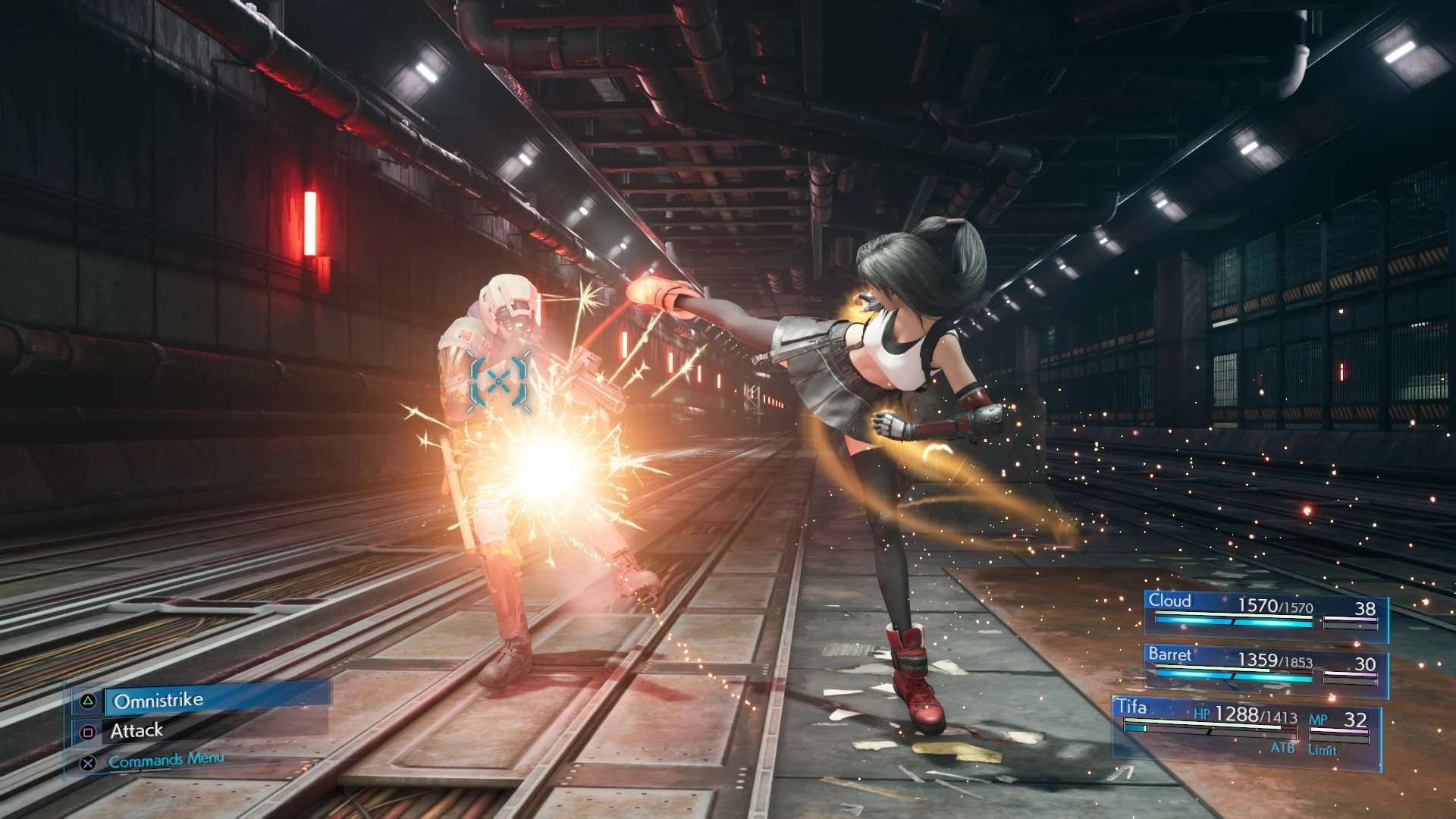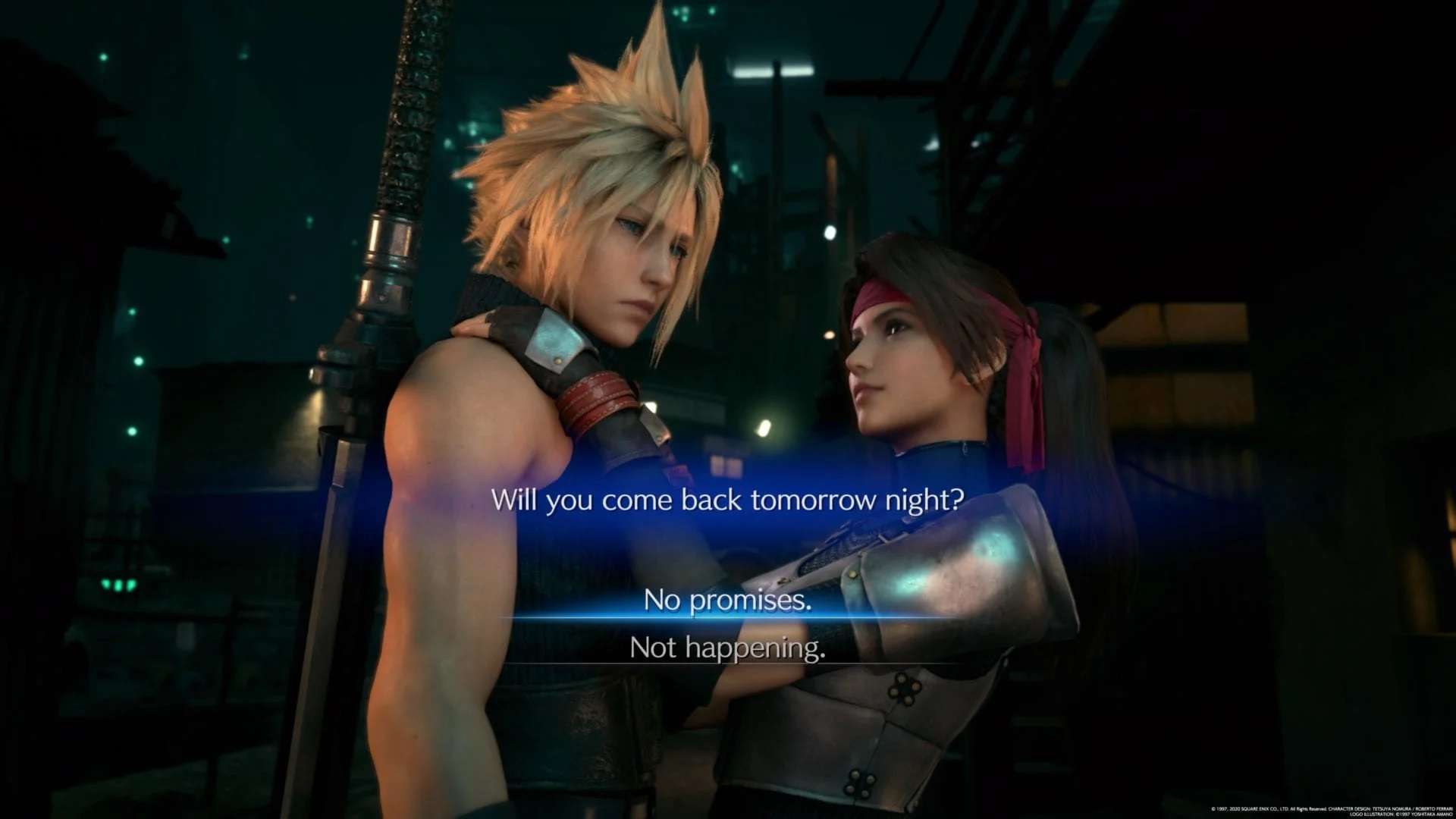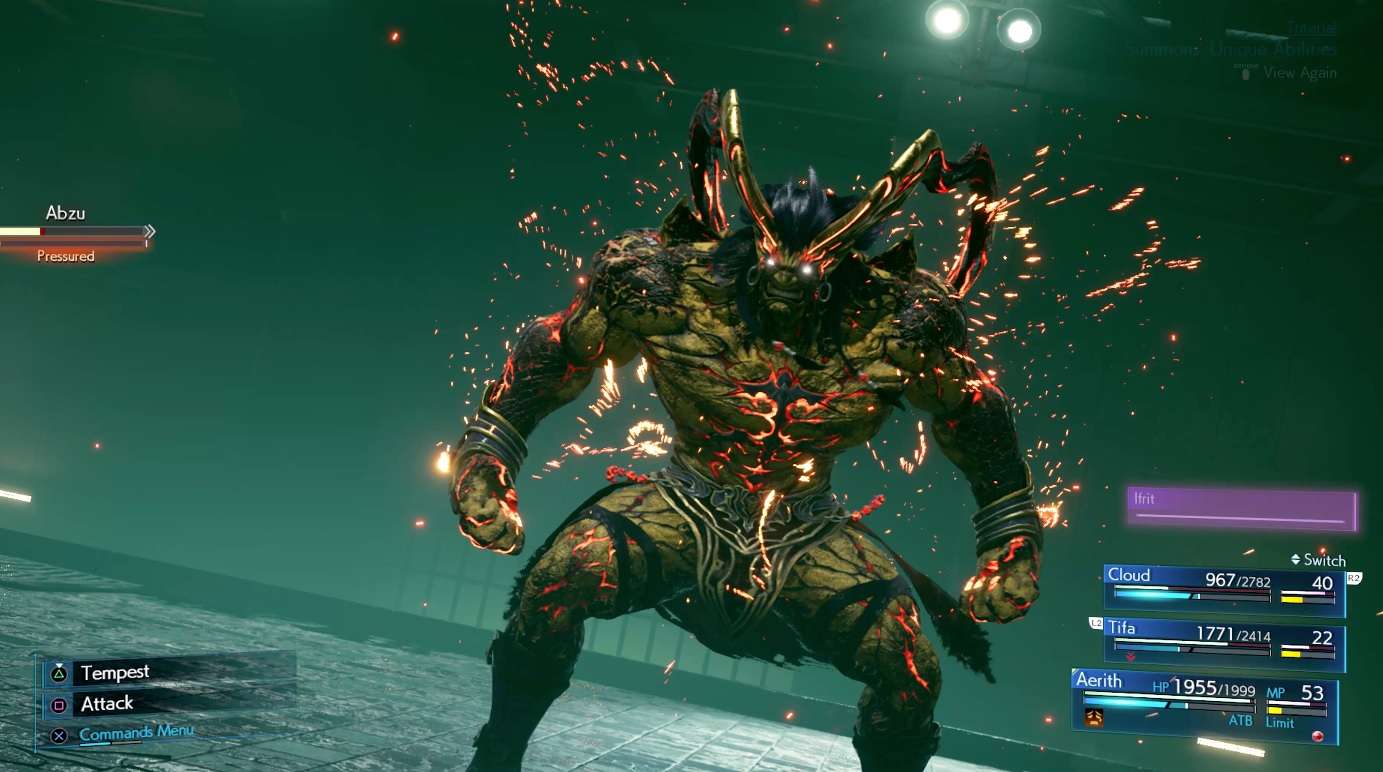
Final Fantasy VII Remake PS4 Review
Final Fantasy VII was one of those games that had a huge impact on not just the people that played the game and fell in love with it, but also for Sony and the PlayStation. It was one of the first games that managed to truly show what the PlayStation could do and why moving to compact discs was the right idea at the time. It was also big for SquareSoft, since this was moving their RPG series into 3D, bringing with it some fantastic cinematics, fascinating characters, a memorable story and an intelligent battle system with a refreshing Materia element, truly sticking it on the map to be noticed by millions of people. To this day it is regarded as one of the best games to be released not only on PlayStation, but of all time. For me, it’s certainly one of the gems of the PlayStation system, and is one of my favourite RPGs on the platform, along with Suikoden II and Parasite Eve (think you can remake that now, Square Enix?). Most people reading this do not need me to go on about how great Final Fantasy VII is, because they already know, and with the wait finally over, just how well has this remake of Final Fantasy VII treated the legacy? Well, simple answer is, the wait was worthwhile.
Since the announcement that Final Fantasy VII Remake was in full production, we were told by Square Enix that this was going to be a multi-instalment game (how many parts we still don’t know), with the first part taking the player all the way up to the end of Midgar. Now fans will know that Midgar was only around six or so hours of the full game of Final Fantasy VII, not even close to the end of the first disc out of three that came with the PlayStation original. That is not a long amount of time for an RPG, but the developers have extended this segment of the game into a 30+ hour adventure – my time was just short of 34 hours with most side content done. This enables the game to offer so much more insight into its characters, world and story through large or small extensions to the narrative.

The game begins in the exact same way as the 1997 original, even down to the nostalgic title screen with Cloud’s trademark buster sword in the ground with the famous theme music playing. This is the first of many scenarios that the game does to trigger those wonderful memories of playing the original – it feels like seeing an old best friend after many years apart, but now with a prettier coat of paint. As the opening finishes with the train pulling into the platform, we are introduced to Cloud Strife, Ex-Soldier turned mercenary who has been hired to work for Avalanche, an eco-terrorist group who want to shut down Shinra Inc, a power company who are draining Mako from the ground and turning into energy. To do this, Avalanche plan to bomb reactors around Midgar to weaken the company, and so the opening of the game, known as the bombing run, is the group travelling to the reactor to blow it up.
Final Fantasy VII Remake makes a lot of changes to the story, but the general progression of the game follows in the same footsteps as the original. I do not want to go into spoilers, because some of the new or rewritten parts of the story are bound to make the next instalments rather fascinating to see how they change because of this – let’s just say this might upset people wanting an authentic copy of the 1997 classic, but it sure is to cause discussions on its impact that new fans will not understand without reading up the differences between the two games. That said, the bombing run is a great example to highlight some changes, which I think people will agree are all for the better, plus since this is the opening for the game, it will not spoil much for people.

From the first hour during this mission, once minor characters, Biggs, Jessie and Wedge, from the general early story part of Final Fantasy VII, are given more life due to the presence of more screen time. Biggs, Jessie and Wedge are more intertwined with the gang that I was wondering if they were going to be become new characters to play with in battle. While they never get that far, they have been developed into major characters with distinct personalities way above what they were like in the original, and with the camera work during cinematics and everyone now having a voice, these once comical bit-piece characters are now some of the highlights of the game. There is even a new story section which involves Cloud, Biggs, Jessie and Wedge going on their own mission together to gather more blasting agent that shows how much these characters have grown between the two versions of the game. Jessie comes across as the one with the most change, as she has a flirtatious relationship with Cloud, trying to break his cold, hard-ass demeanour with her energetic screen presence, and a visit to her parents showcases Jessie’s motivation for helping Avalanche.
Then there is the main cast, yes, even if you loved them in the original game, the work put into this remake will make you fall in love with them all over again, even more so. Of course, fans have already spent plenty of time with Barret, Tifa and Aerith before and have an idea on how they are, and now you get to spend even more time with them within this small section of the grand scope of the Final Fantasy VII story.

I cannot state how much the visuals, camerawork and voices adds to the portrayal of characters. A brilliant example of this with the existing cast is when Cloud and Aerith are escaping from one of the Turks after an assault in Aerith’s church. This requires the two to escape over the rooftops of Sector 5 slums, something that was like 2 minutes in the original, is expanded to give players development of Aerith’s personality. Her innocence is still there, but now she is much more open to playing a joke with Cloud, allowing her guard to drop so she can be witty and funny in her own zany and charming way. The game gives more time to her when visiting her sector, where players learn how impactful she has been on the community, known for helping everyone around her, even an orphanage where she delivers flowers, an area where she jokes with Cloud that she can talk to the plant life. It’s one of the many lovely new scenes that add something to her character, more so because it is not a duplication of an nostalgic scene, but one of the many new ones that are intelligently included to make the characters more elaborated.
While there is a lot to like about the story in this remake, it is not without a few hiccups along the way, mainly down to some pacing issues to extend the time in certain areas of the game. One of these is towards the end featuring Hojo’s lab, in which the work I was doing felt meaningless as it makes the player switch between characters to open various gates for party members to go through, all to please Hojo’s testing. This could have been done better, especially to get to the outcome that the game is trying to message to the player. Still, I feel this is the only one bad chapter out of 18, as the other pacing issues are smaller in scale and don’t feel as tedious as Hojo’s lab.

The next biggest change is of course the combat. No longer are these random counters or waiting for a time bar to fill up to perform one of the actions from a menu with the Active Time Battle (ATB) mechanic. Now combat is real-time as you walk into enemies on the screen. Square is the main method of attack and can be chained into a simple combo string together, while holding it performs a stronger attack. Along with the those two types of attacks, triangle can perform a character unique move. For Cloud, this makes his sword swing heavier, dealing more damage in exchange for reduced movement speed. Circle is the dodge, while R1 acts as block that reduces the damage received.
Elements of Active Time Battle still remain, as each character has a bar that fills up based on your combat involvement. Once one of these blocks is filled, the option to use an item, perform a character ability or use materia is available, just like in the original game, and then the character will perform the animation for this action. Up to three people can be involved in battles, and for the most part, the AI is good. If you do have an issue, a press of left or right on the d-pad switches to another character to be controlled by the player. L2 and R2 also do this in regards to spending their ATB, being able to select this without the need to actually switch to the character to perform the action. Of course, players can just play as Tifa, Barret or Aerith if they like how they handle, since character combos and special attacks are unique. I personally would switch between them for something different than sword play. To help with targeting, a enemy can be locked, so attacks will purposely aim in that direction, as without it, basic attacks will be done based on the direction the character is facing. This lock-on also helps with the new perspective, since the camera is closer to the person not all enemies are in view, and being able to focus on one with the flick of a stick to keep the off camera enemies in check does wonders against those sneaky long range bad guys.

Square Enix has used real combat in titles such as Final Fantasy XV and Kingdom Hearts, but this remake is their best implementation of it yet. The battle system manages to capture the essence of flashy combat, making the heroes appear to be badass combatants who could take on all these people and still come out surviving, and it does this without over complicating it. It is highly dependant on using an enemy’s weakness, such as elemental damage, and this adds to the staggering system, as seen in Final Fantasy XV, where more damage is dealt when an enemy enters staggered after filling up a metre. On the normal difficulty, I would say that it feels fairly balanced, but some materia, such as barrier, felt unimportant, so I rarely used it. I would imagine that once unlocking the hard difficulty after finishing the game, where item usage is restricted, makes materia very important that ones such as haste, barrier and prayer (a material that heals party members) are essential for survival.
Gear and weapons are fairly minimal here, in that the option is down to one weapon, armour and accessory. I guess keeping to the limitation of Midgar, each character doesn’t get that many weapons throughout the game. Weapons can be upgraded through points earned from levelling up. This unlocks stat boosts, attack, magic attack, HP, MP, speed, etc. or additional materia slots to add more materia options to the character. These do not stack between weapons, but thankfully, upgrade points are given to each weapon, so acquiring new gear comes with plenty of points to spend to customise it a little before equipping. Each weapon comes with an ability that can be permanently added to the abilities list once used enough with that weapon. This is super handy near late game, as some of the abilities suit specific situations. Cross-slash is wonderful for hitting many enemies close together, while Counterstance is great for dealing huge damage against a single enemy that hits Cloud during the defensive stance.

In all, while I do think that some more depth could be added through the weapon upgrade system, the customisation that materia added in the original game is working intact with the real-time battle system. Throughout my whole time spent playing, I always felt thrilled to be fighting that I think this could be a way to bring in new JRPG fans who might not like the traditional turn-based combat, even if I personally still enjoy those types of games today.
Unreal Engine 4 remains a showcase for visuals, and Final Fantasy VII Remake is mostly a beautiful game. The character models are staggering detailed, the locations are stunning and cinematics are breathtaking. There are some nooks of Midgar that have been sadly left behind with detail, such as some doors and areas seemingly blank of particular texture work, and there is the occasional hiccup with textures not loading in, something that Unreal Engine has known issues with, but not often seen in the recent engine release. That said, these are only small blights on an otherwise fantastic looking game. The soundtrack is absolutely brilliant, both in terms of new music and the unbelievable remixes of songs. The remixes could have easily gone wrong, but are kept on par with the amazing soundtrack of the original game that nostalgia often comes creeping back in a good way.

Nostalgia is a good word to end this review on. Final Fantasy VII Remake could have easily just played into the nostalgia card and turned out to be a bare minimum remake. There is no doubt that would have sold, but I am glad that is not the case. In terms of the industry and remakes, this has clearly had a lot of work put into it. From the revised combat, visual improvements, more character development, new characters introduced, and even as far as changing some key story elements, an area that other remakes, no matter how superb they have been, do not seem to alter, Square Enix has proven that taking the risk and doing these alterations to Final Fantasy VII has worked. The worst thing about all this is we do not know how long we have to wait for the next part of the story to get our fix.
Right now, I can say I am stoked to find out where the follow up will go, because any doubt I had initially about this remake has long gone after playing through it. All I am left to say is that Final Fantasy VII Remake is a superb RPG for fans and newcomers, and even with all the changes, it still captures the heart of Final Fantasy VII, a special accomplishment that will make the fans fall in love with the title all over again.
